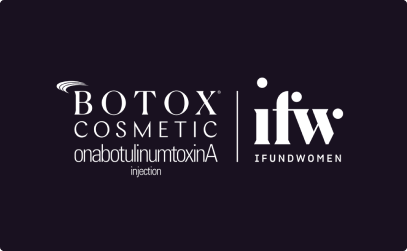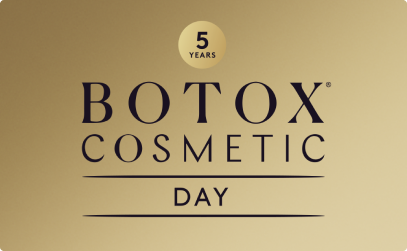See our new privacy terms at https://privacy.abbvie/.
Retain BOTOX® Cosmetic patients with these 6 tips

Your practice’s operations can have an impact on retention rates, and we know patient retention factors into the growth of your practice. According to data from an Allergan Practice Consulting (APC) survey on retention analysis and Allē data, when compared to average practices, those that are prioritizing key areas, such as operational consistency, prebooking, and 2-week follow-ups, see higher retention rates.1
Let’s discuss some tips you can implement for your BOTOX® Cosmetic patient journey in those key areas that may help unlock new opportunities for your office.
Pre-treatment: maximizing efficiency before the assessment
If there’s one thing patients and providers alike can agree on, it's that scheduling consultations should be quick and efficient.2 But did you know nearly 20% of neurotoxin patients report it takes at least 1 month to get an appointment with their provider for treatment?3
Tip #1—Prioritize online scheduling
So how can you streamline the appointment-making and check-in processes at your practice? One simple thing to consider is prioritizing online scheduling. This may help to give BOTOX® Cosmetic patients more control in making their appointments. You can also use this process to provide them with any preconsultation information and questionnaires they’ll need once they come into the office.
Tip #2—Send appointment reminder text messages
Another tip to consider at this phase of the BOTOX® Cosmetic treatment journey is sending reminder text messages. These can serve either as reminders about upcoming appointments or as prompts to encourage patients to schedule.
Treatment: targeting conversations during the assessment
Now we’re into the assessment. These tips are aimed at improving patient engagement during appointments.
Tip #3—Create customized treatment plans
You already know the importance of targeted and personalized treatments, but do your patients? Consider approaches for creating customized treatment plans, such as providing thorough assessments, discussing aesthetic goals and concerns, sharing your expertise, and giving your honest treatment recommendations.
Tip #4—Provide patient education on BOTOX® Cosmetic
At this phase of the BOTOX® Cosmetic patient journey education is key. Once you've identified the appropriate patients, teach them about The Look of 3℠ with BOTOX® Cosmetic—treatment in 3 areas, 64 Units, at least 3 times a year spaced at least 90 days apart.4,* Remind them that only BOTOX® Cosmetic is FDA approved to temporarily improve the look of 3 areas—moderate to severe frown lines, crow’s feet lines, and forehead lines.4-8 It may also be helpful to teach appropriate patients how muscles in the upper face are interrelated and work together, and to explain the importance of treating all 3 areas.9,10
Post-treatment: keeping communication going after the appointment
Follow up, follow up, follow up! When it comes to BOTOX® Cosmetic patient retention, we can’t stress the importance of post-treatment follow-up enough. In fact, 93% of Allē Members treated with BOTOX® Cosmetic who received a follow-up from their provider are very likely to receive another neurotoxin treatment in the next 6 months.11
Tip #5—Book follow-ups before patients leave the office
One simple action your practice can consider making for your BOTOX® Cosmetic patients is booking appointments before they leave the office.
Tip #6—Implement 2-week check-ins
Then, to foster open communication even further, consider making 2-week check-ins standard practice. This allows you not only to track how their previous treatment went but to also remind them of their upcoming follow-up.
These efforts work best when you get your whole practice on board. BOTOX® Cosmetic patient retention is a full team effort! Empower everyone to take on a role. It may be helpful to assign a point person for each of the tips and tricks, such as a dedicated person to handle follow-ups and another to be in charge of rebooking next appointments before patients leave the office.
Want new tools and tips that can be used for the BOTOX® Cosmetic patient journey in your practice? Continue to check back here for updates!
Have questions? Connect with an Allergan Aesthetics representative.
Contact Allergan Aesthetics at 1-844-NEW-2AGN to set up your account, or sign up at Allergan Advantage.
*Treatments should be spaced at least 90 days apart.4
About
Find out why specialists choose BOTOX® Cosmetic for their practices.
Results
See the real results of patients treated with BOTOX® Cosmetic.
Practice Support
Partner with Allergan Aesthetics to gain access to support and resources.
References: 1. Data on file, Allergan Aesthetics, May 2021; APC Retention Survey Report. 2. Data on file, Allergan Aesthetics, January 2021; Allergan Quantitative Insights Delivery. 3. Data on file, Allergan Aesthetics, February 2023; Consumer NTX A&U. 4. BOTOX® Cosmetic Prescribing Information, November 2023. 5. Dysport Prescribing Information, January 2023. 6. Xeomin Prescribing Information, September 2023. 7. Jeuveau Prescribing Information, January 2020. 8. Daxxify Prescribing Information, August 2023. 9. Michaud T, Gassia V, Belhaouari L. Facial dynamics and emotional expressions in facial aging treatments. J Cosmet Dermatol. 2015;14(1):9-21. 10. Benedetto AV, ed. Botulinum Toxin in Clinical Dermatology. Taylor & Francis; 2006. 11. Data on file, Allergan Aesthetics, 2023; Impact of Follow-Up.






